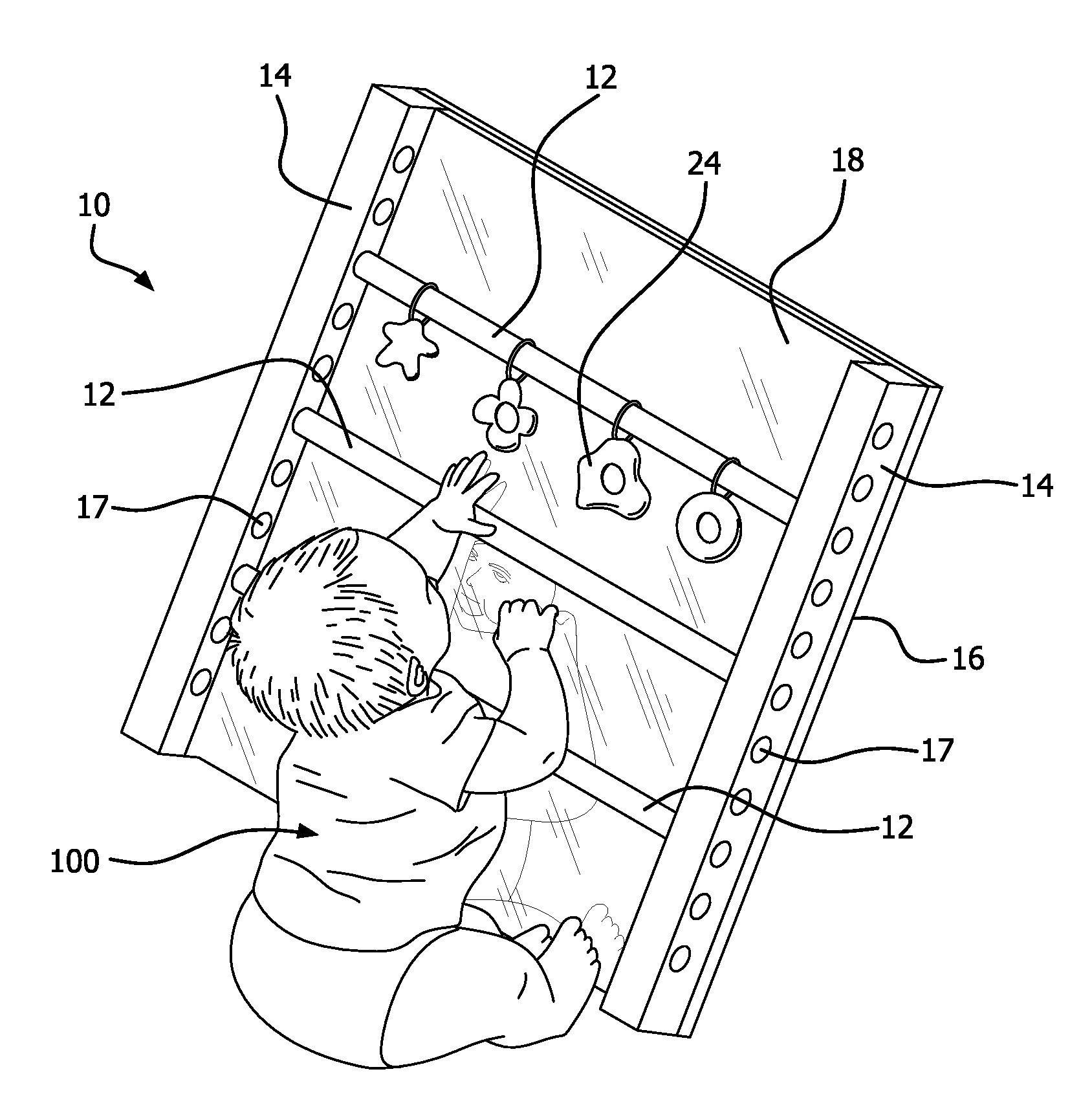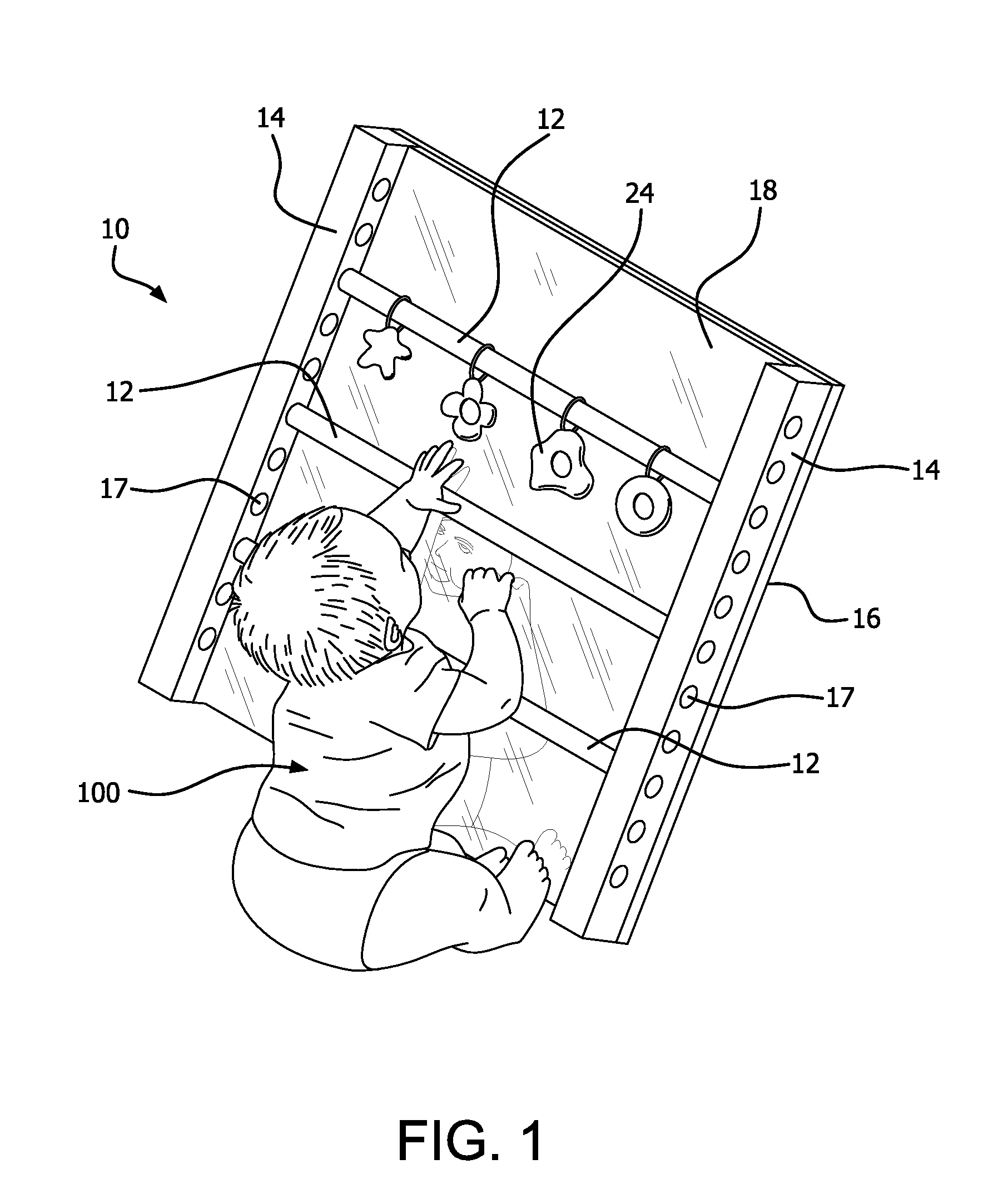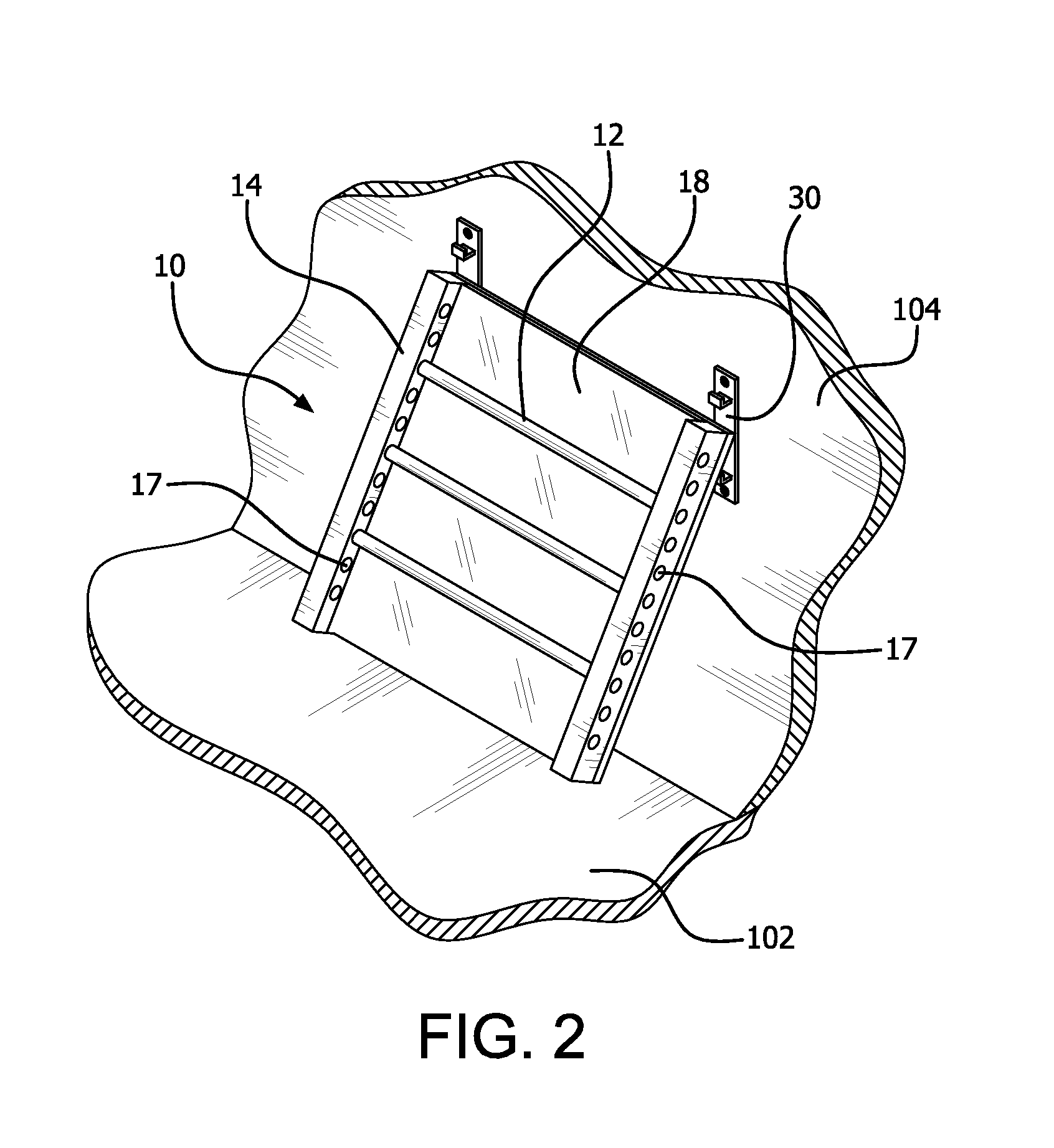Child development sit to stand device
a technology for sitting and standing, which is applied in the direction of movement coordination devices, instruments, gymnastics exercises, etc., can solve the problems of under-arousal of new activities, difficulty in learning motor skills, and developmental delays, and achieve the effect of increasing the weight of the sitting devi
- Summary
- Abstract
- Description
- Claims
- Application Information
AI Technical Summary
Benefits of technology
Problems solved by technology
Method used
Image
Examples
Embodiment Construction
[0055]References will now be made in detail to the preferred embodiments of the invention, examples of which are illustrated in the accompanying drawings. Wherever possible, the same reference numerals will be used throughout the drawings to refer to same or like parts.
[0056]FIG. 1 shows is a shows child development sit to stand device (hereinafter “STS device”) 10 according to a first preferred embodiment of the present invention. The STS device 10 is designed to assist and aid in the development of a child's or infant's cognitive and neuromuscular abilities so that the child may more readily attain a standing position from a first position such as laying, crawling or sitting and to remain standing for a period of time. (The terms child and infant are used interchangeably in this application.)
[0057]The STS device 10 comprises one or more fixtures 12 with each fixture 12 permitting a child to grasp with his hand and raise his own body upwardly under his own ability. A fixture is any...
PUM
 Login to View More
Login to View More Abstract
Description
Claims
Application Information
 Login to View More
Login to View More - R&D
- Intellectual Property
- Life Sciences
- Materials
- Tech Scout
- Unparalleled Data Quality
- Higher Quality Content
- 60% Fewer Hallucinations
Browse by: Latest US Patents, China's latest patents, Technical Efficacy Thesaurus, Application Domain, Technology Topic, Popular Technical Reports.
© 2025 PatSnap. All rights reserved.Legal|Privacy policy|Modern Slavery Act Transparency Statement|Sitemap|About US| Contact US: help@patsnap.com



